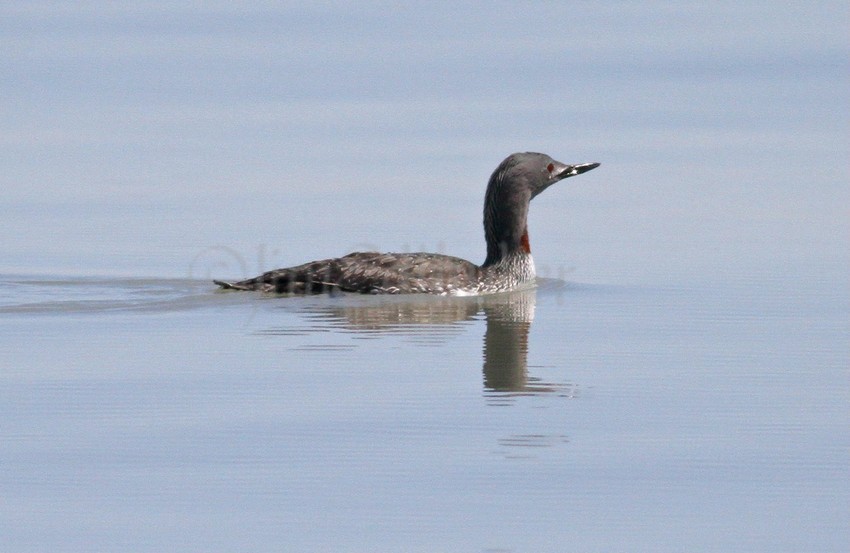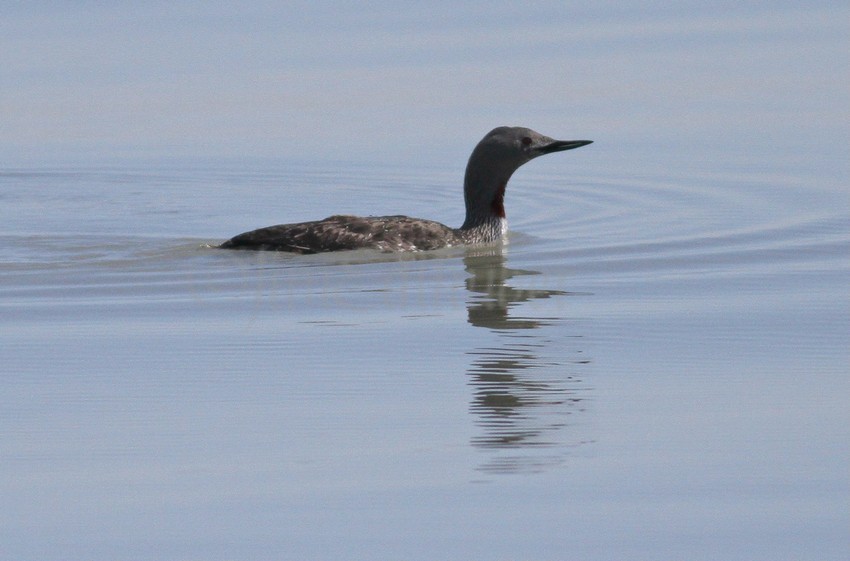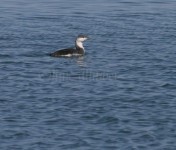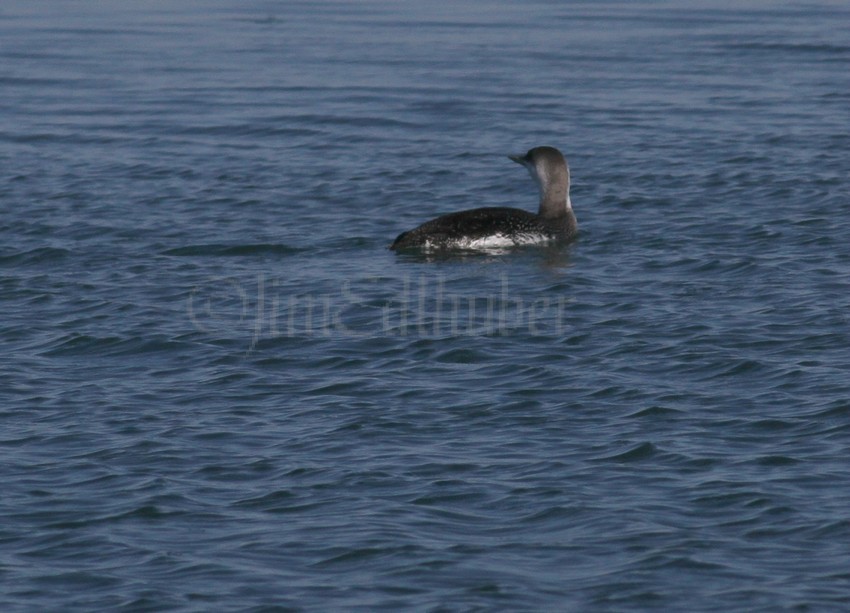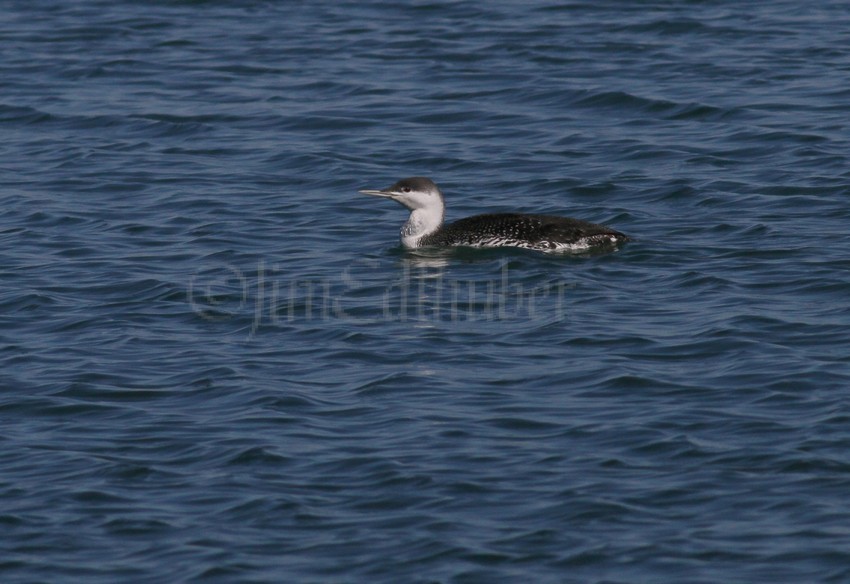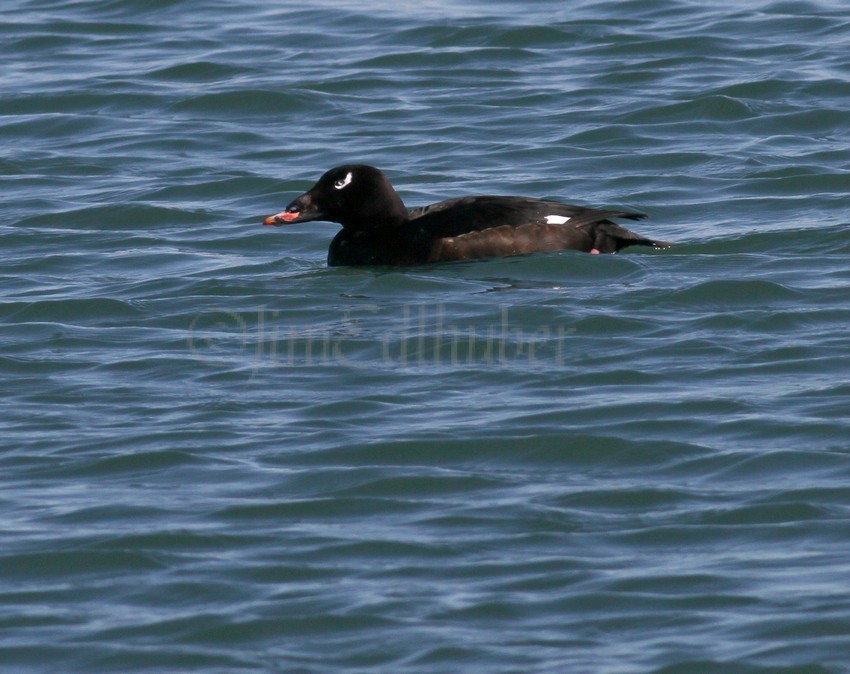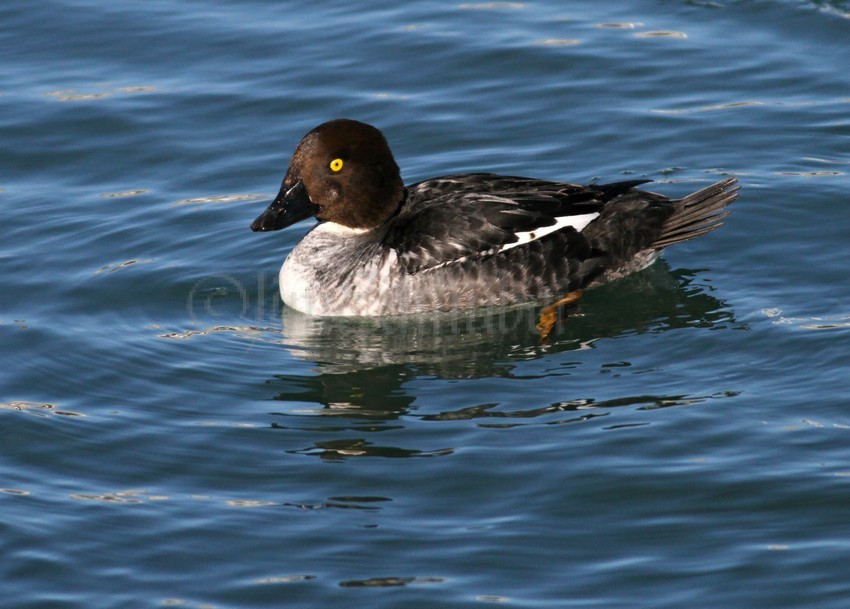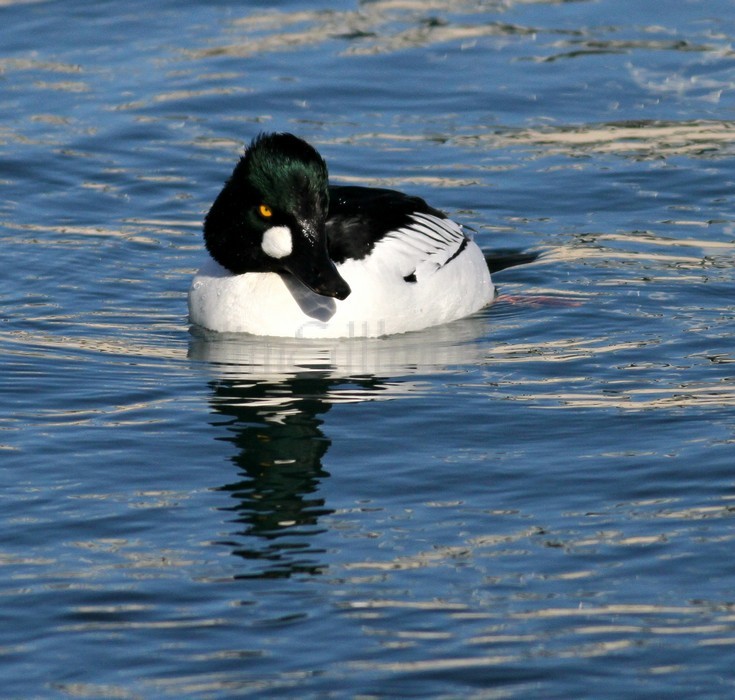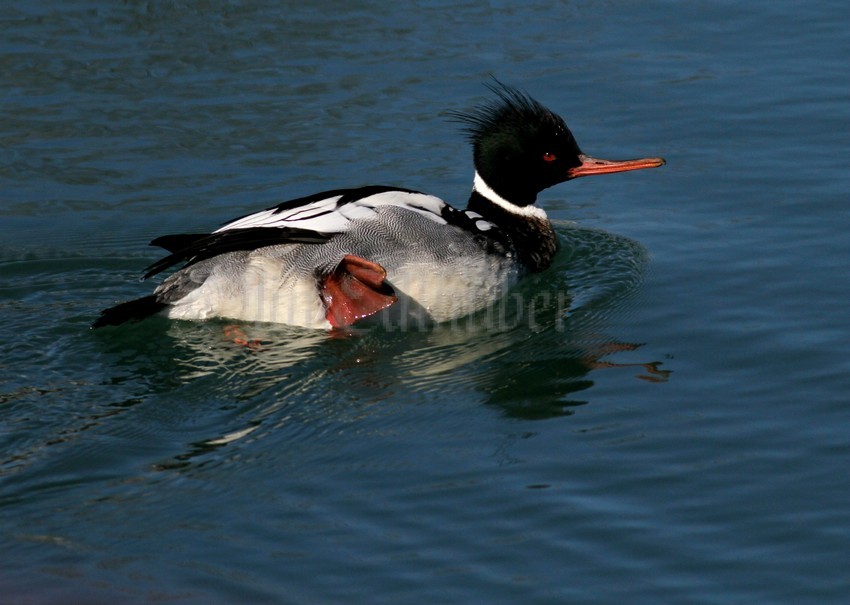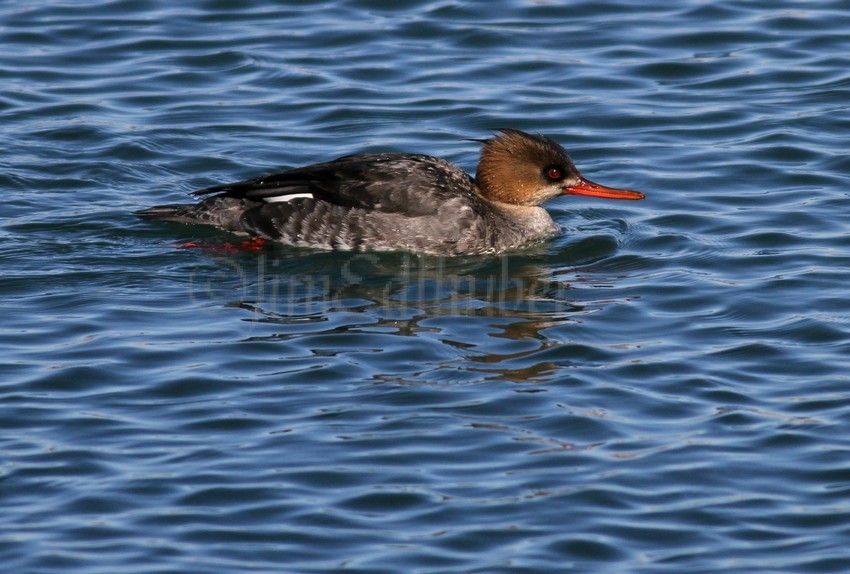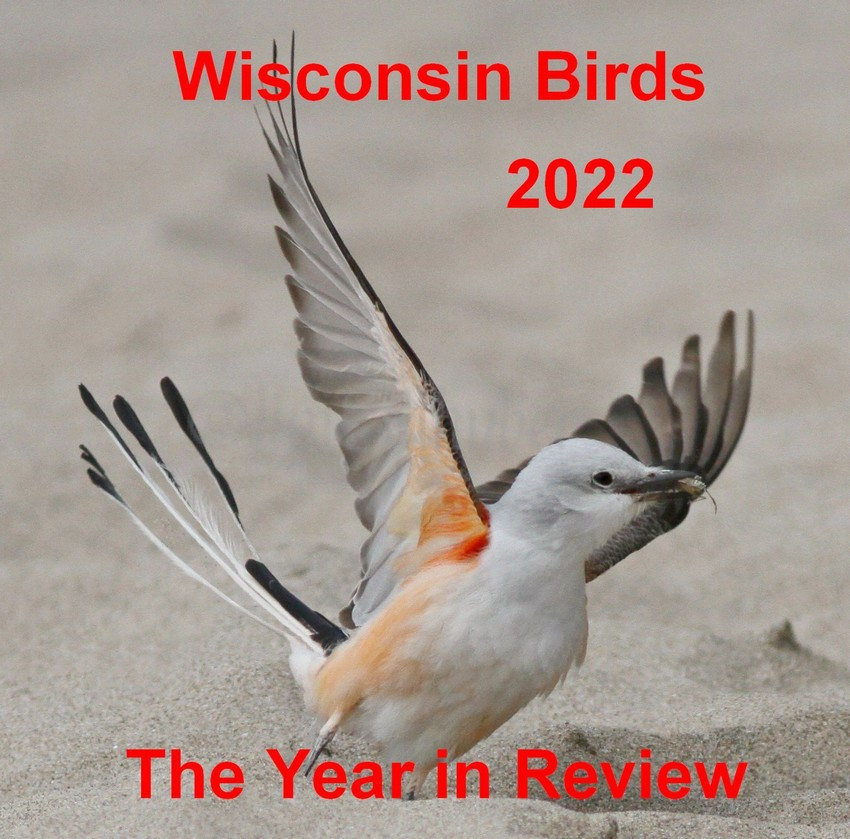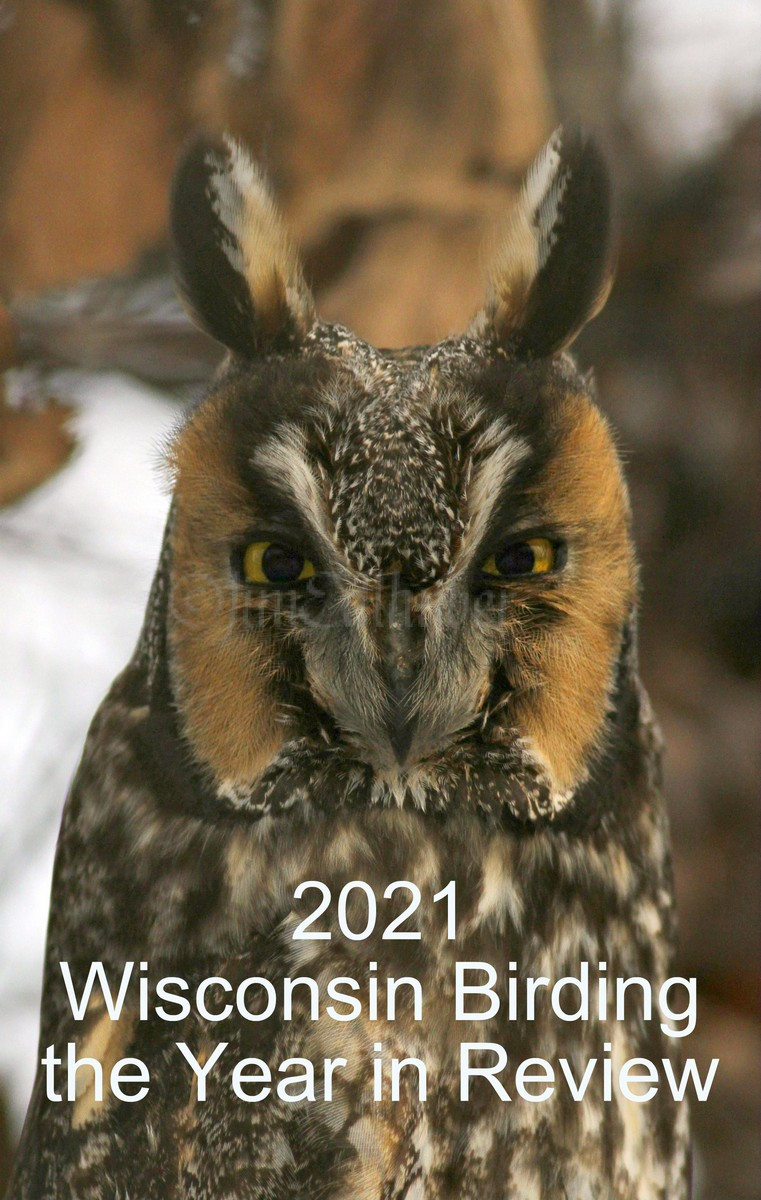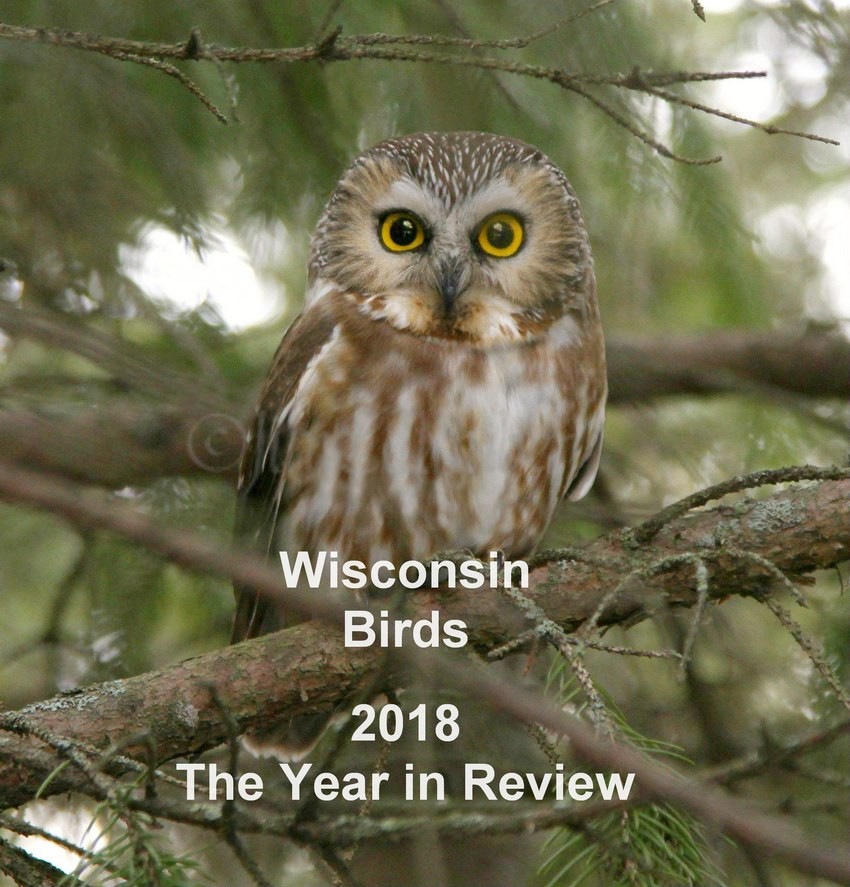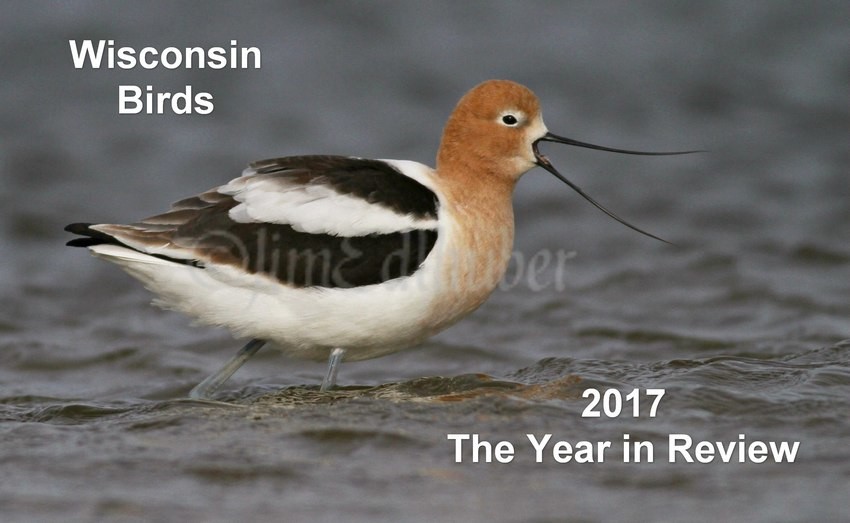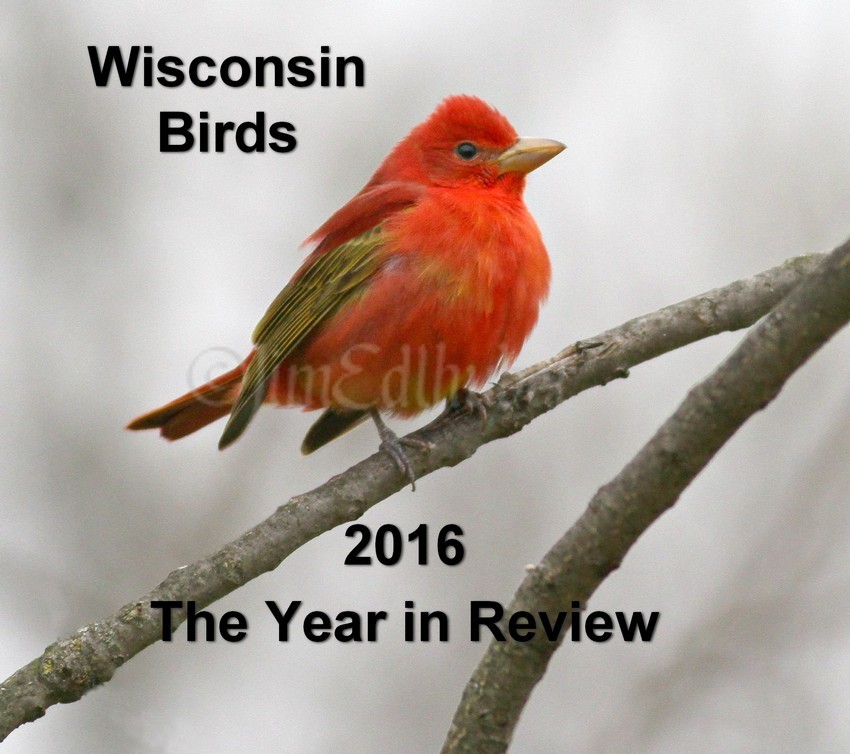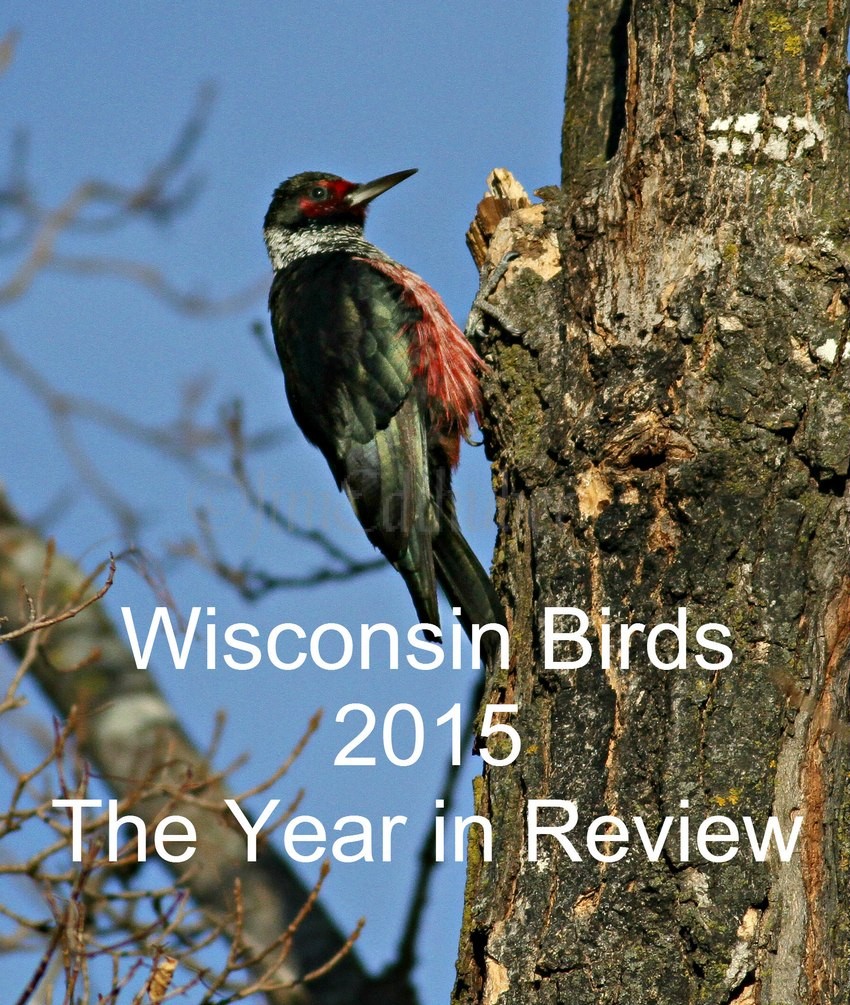
Birding along the lakefront in Milwaukee today I ran into John Miller who in talking had never seen a Horned Grebe. I said I had seen 3 at McKinley Marina on the about an hour ago. We were at Lake Park and it was quiet so we meet over at the McKinley Marina. We walked out the concrete pier about a 1/4 mile with not much seen other than the Long-tailed Duck which was not close, male which was still hanging around. On our way back to our cars I spotted a couple of Horned Grebes. John started photographing them. While he was busy doing that I used my bins and checked out north of the big pier. I spotted what I thought was loon out quiet a ways. I knew this was a loon I had never seen before, I thought OMG, it is a Red-throated Loon nearing full breeding plumage. It dove 5 times and stayed under for long periods of time. Each time it surfaced, it was a couple hundred feet more out in the lake until it was pretty much hard to make out anymore details. I never thought I would have ever seen one of these as we typically see the none breeding plumage Red-throated Loons, it must be the weather! A fun time out which started out slow. Still present at the marina, 100 Bonaparte’s Gulls, Long-tailed Duck, adult male, and noticed a nice raft of about 25 Ruddy Ducks near Bradford Beach. Finally a gorgeous day out with plenty of sun, felt like 60 and no wind. It has been along time since I could go with out my snow boots and winter coat, how sweet! Images were taken on April 20, 2018.

